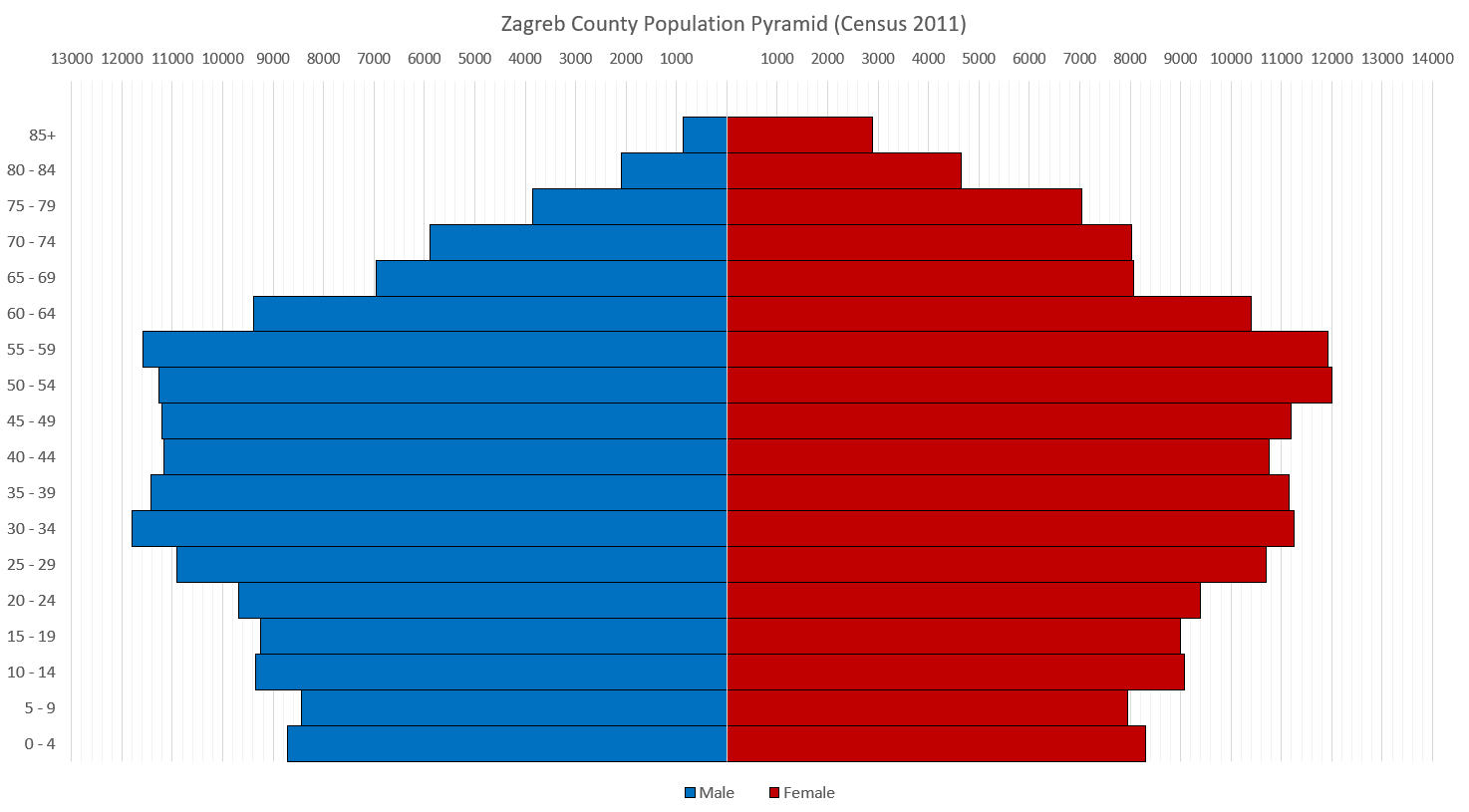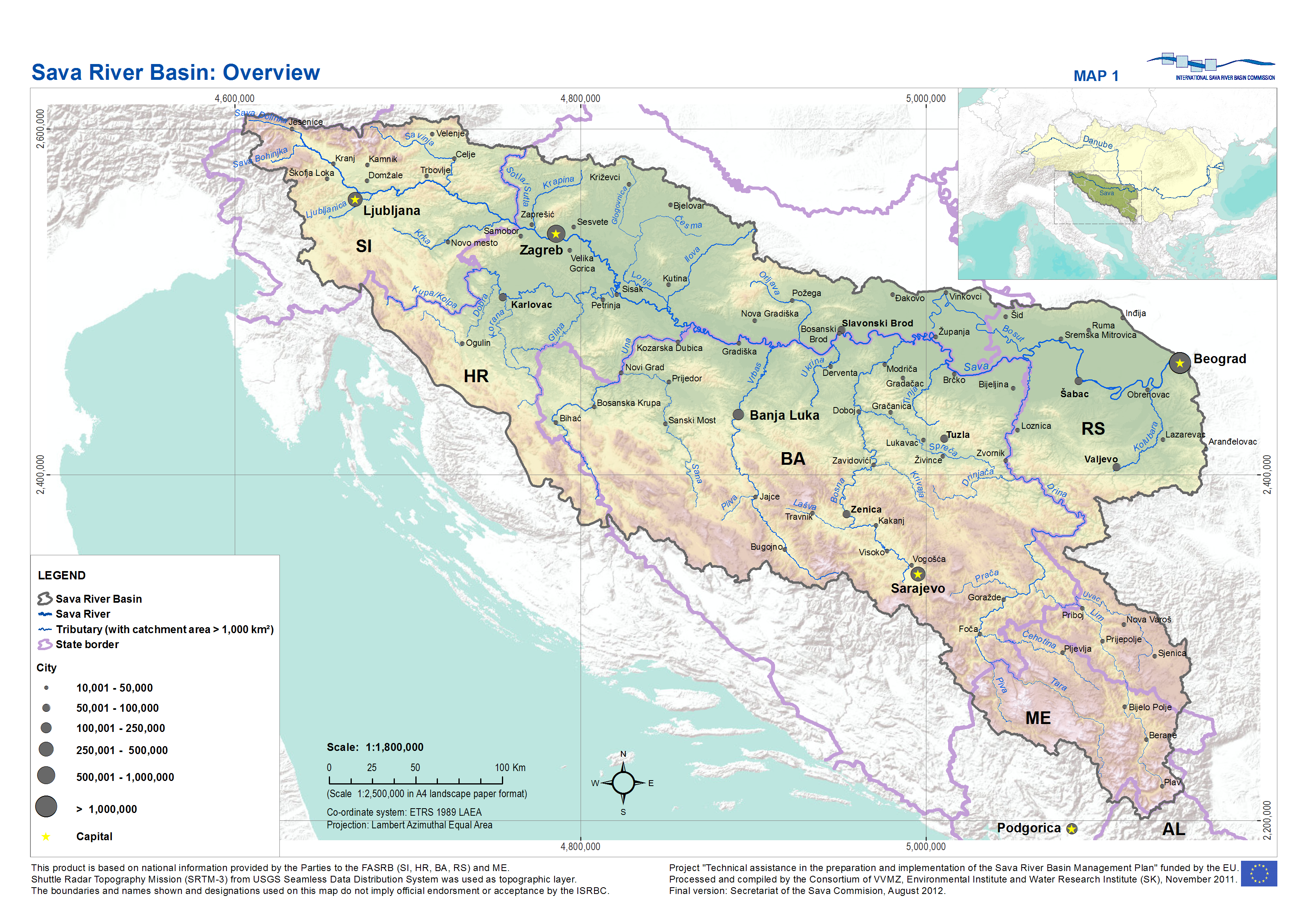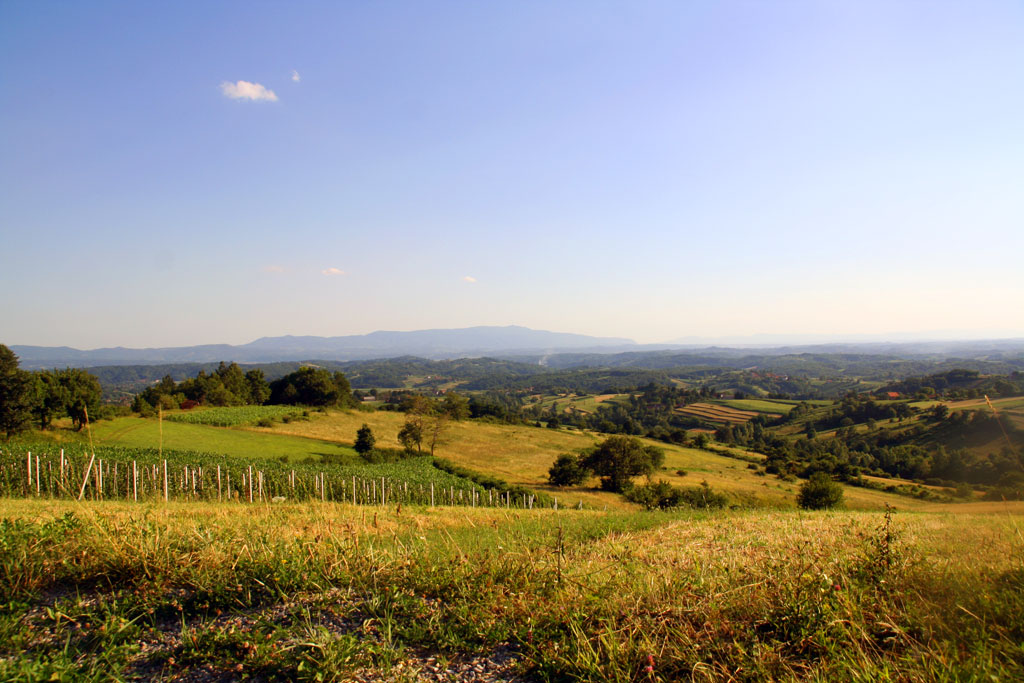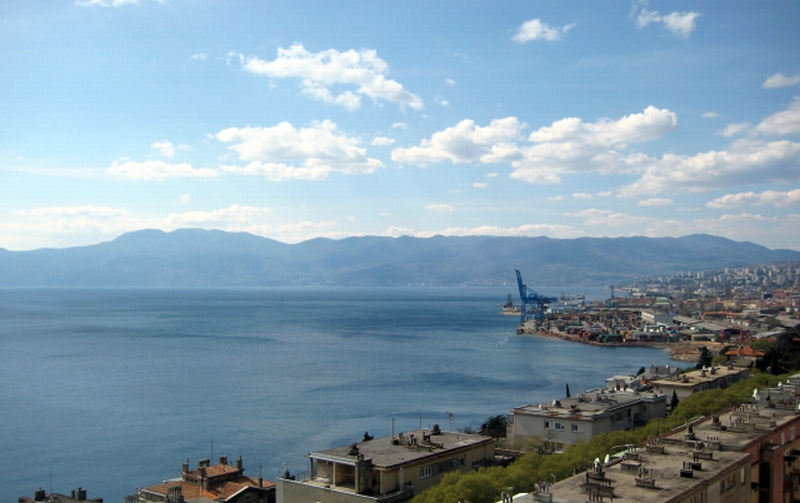|
Central Croatia
In contemporary geography, the terms Central Croatia () and Mountainous Croatia () are used to describe most of the area sometimes historically known as Croatia or Croatia proper (), one of the four historical regions of the Republic of Croatia, together with Dalmatia, Istria, and Slavonia. It is located between Slavonia in the east, the Adriatic Sea in the west, and Dalmatia to the south. The region is not officially defined, and its borders and extent are described differently by various sources. The term Central Croatia refers to the northeastern part, and the term Mountainous Croatia refers to the southwestern part of the territory; the far western part is known as the Croatian Littoral; likewise the terms 'Zagreb macroregion' and 'Rijeka macroregion' can be used instead. Central Croatia is the most significant economic area of the country, contributing well over 50% of Croatia's gross domestic product. The capital of the Republic of Croatia, Zagreb, is the largest city ... [...More Info...] [...Related Items...] OR: [Wikipedia] [Google] [Baidu] |
Regions Of Croatia
Though the Croatia, Republic of Croatia administratively consists of counties of Croatia, twenty counties, it is traditionally divided into four historical region, historical and cultural area, cultural regions: Croatia proper, Dalmatia, Istria, and Slavonia. These are further divided into other, smaller regions. Historical regions Smaller regions *''Banovina (region), Banovina'' (or ''Banija)'' is a region in central Croatia, situated between the rivers Sava, Una (Sava), Una and Kupa River (Croatia), Kupa. *''Baranya (region), Baranja'' forms a small enclave between the region of Slavonia and the Republic of Hungary, it lies in the north east of Croatia. The rest of the region known as Baranja is located in Hungary. *Croatian Littoral (''Hrvatsko primorje''), the maritime region of Croatia proper *''Gorski kotar'' occupies the area between the major cities of Karlovac and Rijeka ( ''Fiume''). The regions main city is Delnice. The river Kupa River (Croatia), Kupa separates th ... [...More Info...] [...Related Items...] OR: [Wikipedia] [Google] [Baidu] |
Zagreb County
Zagreb County () is a county in Northern Croatia. It surrounds, but does not contain, the nation's capital Zagreb, which is a separate territorial unit. For that reason, the county is often nicknamed "Zagreb ring" (). According to the 2021 census, the county has 299,985 inhabitants, most of whom live in smaller urban satellite towns. The Zagreb County once included the city of Zagreb, but in 1997 they separated, when the City was given a special status. Although separated from the city of Zagreb both administratively and territorially, it remains closely linked with it. Zagreb County borders on Krapina-Zagorje County, the city of Zagreb, Varaždin County, and Koprivnica-Križevci County in the north, Bjelovar-Bilogora County in the east, Sisak-Moslavina County in the south and Karlovac County in the southwest as well as Slovenia in the west. Franjo Tuđman Airport is located on the territory of Zagreb County, the biggest and most important airport in the country. Admini ... [...More Info...] [...Related Items...] OR: [Wikipedia] [Google] [Baidu] |
Posavina
Posavina ( sr-cyr, Посавина) is a geographical region that stretches along the Sava river, encompassing only the inner areas of the Sava river basin, that are adjacent or near to the Sava river itself, namely catch region spanning from the Julian Alps in the northwest to the confluence with the Danube in the southeast. It passes through several countries of former Yugoslavia, namely Slovenia, Croatia, Bosnia and Herzegovina and Serbia. In Slovene, the term Posavina is not used to describe the parts of Slovenia that lie by the Sava river. Instead, the terms Posavje, Zasavje and Zgornjesavska dolina are used (however, the parts of Slovenia between Litija and Bled, as well as Bohinj, are generally not defined by their proximity to the Sava river in Slovenian geographical nomenclature). Geography The geography of the Posavina region is defined by geological features of the central (inner) zones of the Sava river basin, near or adjacent to the Sava river itself. ... [...More Info...] [...Related Items...] OR: [Wikipedia] [Google] [Baidu] |
Podravina
''Podravina'' (in Croatian) or ''Podravje'' (in Slovenian) are Slavic names for the Drava river basin in northern Croatia and Slovenia. Both names combine the hydronym with the South Slavic prefix "''po''-", meaning "alongside" or "after". History Between 1929 and 1941, the area was mostly incorporated in one of the provinces of the Kingdom of Yugoslavia, the ''Drava Banovina'' (Banate of Drava.) The banate comprised most of present-day Slovenia, and shared its capital of Ljubljana. One of the modern counties of Croatia is named Virovitica-Podravina; however, the unofficial capital of the Croatian Podravina region is the city of Koprivnica, the capital of Koprivnica-Križevci County. Major cities and towns along the river Cities and towns in Slovenia: *Dravograd *Maribor *Ptuj Cities and towns in Croatia: *Varaždin *Koprivnica (Capital of Croatian Podravina) *Đurđevac *Virovitica * Slatina *Osijek The state route D2 connects all Croatian towns in ''Podravina''. See a ... [...More Info...] [...Related Items...] OR: [Wikipedia] [Google] [Baidu] |
Hrvatsko Zagorje
Hrvatsko Zagorje (; Croatian Zagorje; ''zagorje'' is Croatian language, Croatian for 'backland' or 'behind the hills') is a cultural region in northern Croatia, traditionally separated from the country's capital Zagreb by the Medvednica mountains. It comprises the whole area north of Mount Medvednica up to Slovenia in the north and west, and up to the regions of Međimurje and Podravina in the north and east. The population of Zagorje is not recorded as such, as it is administratively divided among Krapina-Zagorje County (total population 142,432), and western and central part of Varaždin County (total population 183,730). The population of Zagorje can be reasonably estimated to exceed 300,000 people. In Croatia, the area is usually referred to simply as ''Zagorje'' (Croatian for 'backland' or 'behind the hills'; with respect to Medvednica). However, to avoid confusion with the nearby Municipality of Zagorje ob Savi in Slovenia, the Croatian part is called ''Hrvatsko Zagorje' ... [...More Info...] [...Related Items...] OR: [Wikipedia] [Google] [Baidu] |
Gorski Kotar
Gorski Kotar () is the mountainous region in Croatia between Karlovac and Rijeka. Because 63% of its surface is forested it is popularly called ''the green lungs of Croatia'' or ''Croatian Switzerland''. The European route E65, which connects Budapest and Zagreb with the Adriatic Port of Rijeka, passes through the region. Geography The region is divided between Primorje-Gorski Kotar County and Karlovac County. The majority of the region lies in Primorje-Gorski Kotar County including the cities of Delnice, Čabar, Vrbovsko; and the municipalities of Mrkopalj, Ravna Gora, Skrad, Brod na Kupi, Fužine and Lokve. The part of the region that is in Karlovac County contains the municipality of Bosiljevo and part of the city of Ogulin. With a population of 4454, Delnice is the largest city of the region and its center. Other centers with populations of more than 1,000 are Vrbovsko (1,900) and Ravna Gora (1,900). Begovo Razdolje, the highest town in Croatia, is located in Gor ... [...More Info...] [...Related Items...] OR: [Wikipedia] [Google] [Baidu] |
Lika
Lika () is a traditional region of Croatia proper, roughly bound by the Velebit mountain from the southwest and the Plješevica mountain from the northeast. On the north-west end Lika is bounded by Ogulin-Plaški basin, and on the south-east by the Malovan pass. Today most of the territory of Lika (Brinje, Donji Lapac, Gospić, Lovinac, Otočac, Perušić, Plitvička Jezera, Udbina and Vrhovine) is part of Lika-Senj County. Josipdol, Plaški and Saborsko are part of Karlovac County and Gračac is part of Zadar County, and it takes up about 12% of Croatia, Croatia's land area. Major towns include Gospić, Otočac, and Gračac, most of which are located in the karst poljes of the rivers of Lika (river), Lika, Gacka and others. The Plitvice Lakes National Park and Northern Velebit National Park are also in Lika. History Antiquity Since the first millennium BC the region was inhabited by the Iapodes, an ancient people related to Illyrians. During the Gallic invasion of the Balk ... [...More Info...] [...Related Items...] OR: [Wikipedia] [Google] [Baidu] |
Gross Domestic Product
Gross domestic product (GDP) is a monetary measure of the total market value of all the final goods and services produced and rendered in a specific time period by a country or countries. GDP is often used to measure the economic performance of a country or region. Several national and international economic organizations maintain definitions of GDP, such as the OECD and the International Monetary Fund. GDP is often used as a metric for international comparisons as well as a broad measure of economic progress. It is often considered to be the world's most powerful statistical indicator of national development and progress. The GDP can be divided by the total population to obtain the average GDP per capita. Total GDP can also be broken down into the contribution of each industry or sector of the economy. Nominal GDP is useful when comparing national economies on the international market according to the exchange rate. To compare economies over time inflation can be adjus ... [...More Info...] [...Related Items...] OR: [Wikipedia] [Google] [Baidu] |
Croatian Littoral
Croatian Littoral () is a historical name for the region of Croatia comprising mostly the coastal areas between traditional Dalmatia to the south, Mountainous Croatia to the north, Istria and the Kvarner Gulf of the Adriatic Sea to the west. The term "Croatian Littoral" developed in the 18th and 19th centuries, reflecting the complex development of Croatia in historical and geographical terms. The region saw frequent changes to its ruling powers since classical antiquity, including the Roman Empire, the Ostrogoths, the Lombards, the Byzantine Empire, the Frankish Empire, and the Croats, some of whose major historical heritage originates from the area—most notably the Baška tablet. The region and adjacent territories became a point of contention between major European powers, including the Republic of Venice, the Kingdom of Hungary, and the Habsburg and Ottoman Empires, as well as Austria, the First French Empire, the Kingdom of Italy, and Yugoslavia. Geography Croatian Li ... [...More Info...] [...Related Items...] OR: [Wikipedia] [Google] [Baidu] |
Adriatic Sea
The Adriatic Sea () is a body of water separating the Italian Peninsula from the Balkans, Balkan Peninsula. The Adriatic is the northernmost arm of the Mediterranean Sea, extending from the Strait of Otranto (where it connects to the Ionian Sea) to the northwest and the Po Valley. The countries with coasts on the Adriatic are Albania, Bosnia and Herzegovina, Croatia, Italy, Montenegro, and Slovenia. The Adriatic contains more than 1,300 islands, mostly located along its eastern coast. It is divided into three basins, the northern being the shallowest and the southern being the deepest, with a maximum depth of . The prevailing currents flow counterclockwise from the Strait of Otranto. Tidal movements in the Adriatic are slight, although acqua alta, larger amplitudes occur occasionally. The Adriatic's salinity is lower than the Mediterranean's because it collects a third of the fresh water flowing into the Mediterranean, acting as a dilution basin. The surface water temperatures ... [...More Info...] [...Related Items...] OR: [Wikipedia] [Google] [Baidu] |
Slavonia
Slavonia (; ) is, with Dalmatia, Croatia proper, and Istria County, Istria, one of the four Regions of Croatia, historical regions of Croatia. Located in the Pannonian Plain and taking up the east of the country, it roughly corresponds with five Counties of Croatia, Croatian counties: Brod-Posavina County, Brod-Posavina, Osijek-Baranja County, Osijek-Baranja, Požega-Slavonia County, Požega-Slavonia, Virovitica-Podravina County, Virovitica-Podravina, and Vukovar-Syrmia County, Vukovar-Syrmia, although the territory of the counties includes Baranya (region), Baranya, and the definition of the western extent of Slavonia as a region varies. The counties cover or 22.2% of Croatia, inhabited by 806,192—18.8% of Croatia's population. The largest city in the region is Osijek, followed by Slavonski Brod and Vinkovci. Slavonia is located in the Pannonian Basin, largely bordered by the Danube, Drava, and Sava rivers. In the west, the region consists of the Sava and Drava valleys and ... [...More Info...] [...Related Items...] OR: [Wikipedia] [Google] [Baidu] |








